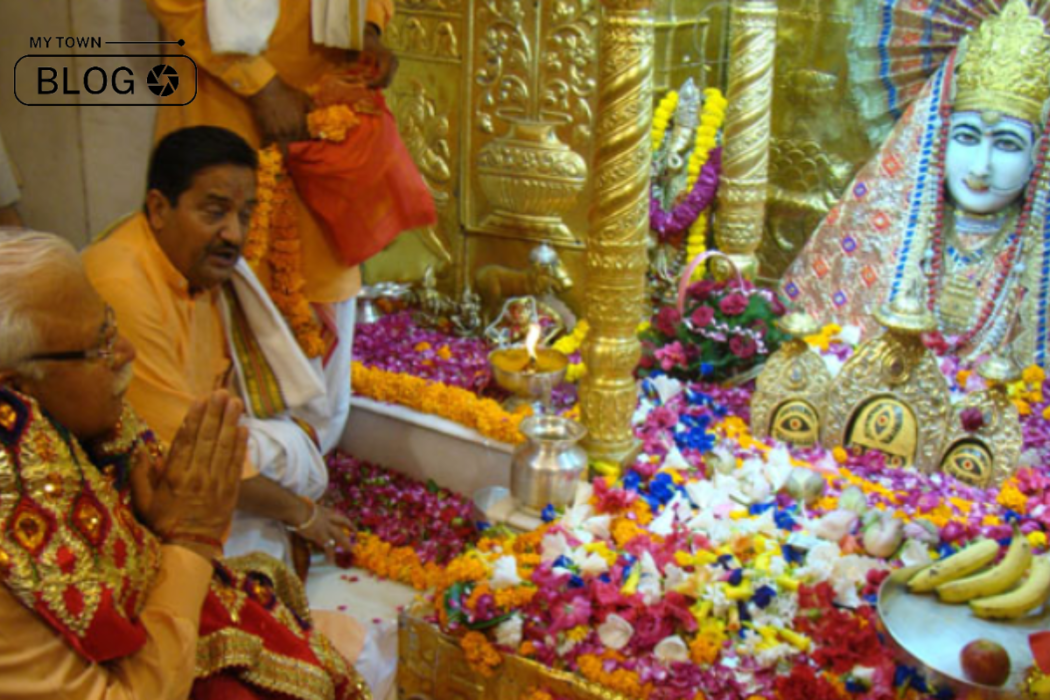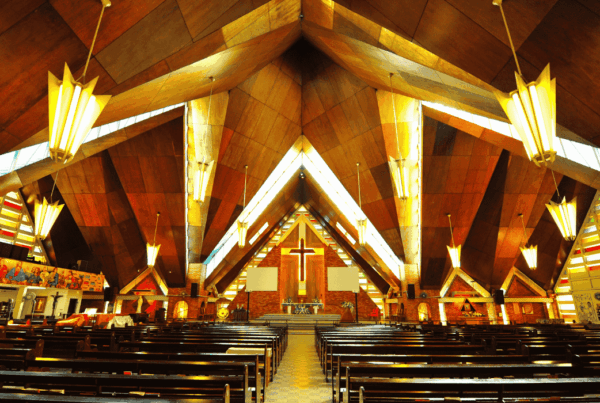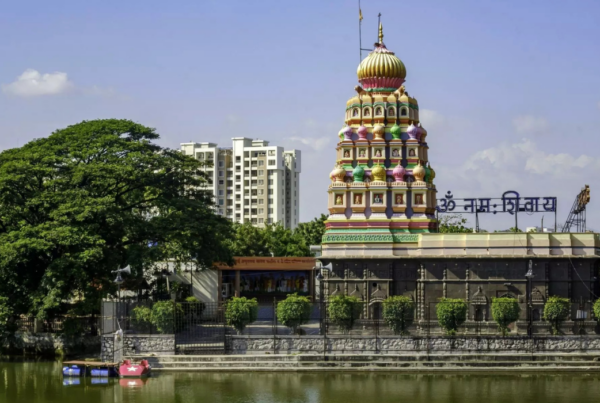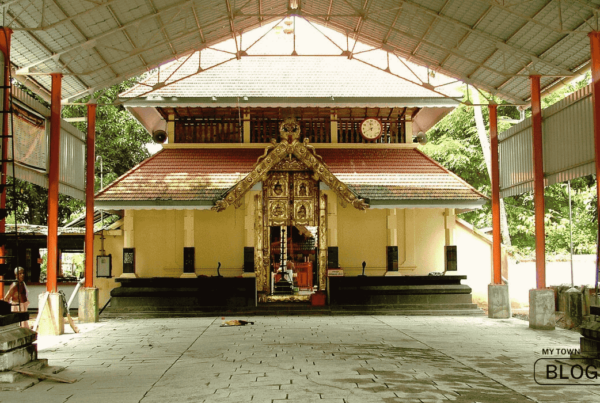Mansa Devi Temple Panchkula:
Legend has it that in the Shivalik Hills, a cow would arrive daily to offer milk at three adjoining stones (Pindies) on the hilltop. Residents observed this phenomenon and discovered three Holy Shilas, which they began worshipping, later identified as the forehead of Shri Sati. Subsequently, Mansa Devi Temple Panchkula was constructed by Maharaja Gopal Singh of Manimajra, situated on the Shivalik foothills in the village Bilaspur, Tehsil, and District Panchkula, during the period 1811-1815. Additionally, the Patiala temple, located 200 meters from the main temple, was constructed by Sh. Karam Singh, the then Maharaja of Patiala, in 1840.
Initially, the temple had the patronage of the Manimajra State. However, after the merger of princely states into Pepsu, state government patronage ended, resulting in neglect of the temples. The raja of Manimajra appointed a pujari as ‘khidmatuzar’ to worship the deity, but after the merger, these pujaris became independent in managing the affairs of the temple and its land. Unfortunately, they were unable to maintain the temple or provide necessary facilities to visiting devotees, leading to a deterioration in its condition over time.
According to belief, the current location of the Mata Mansa Devi temple is where the subsequent part of Sati Mata’s head was said to have fallen. Initially known as the temple of Mata Sati, it is said that King Gopaldas of Manimajra built a cave from his fort to the temple, which spanned about 3 kilometers. He would visit Mother Sati with his queen daily from this cave, and it was believed that the temple’s cupboard would only open in his presence.
Neglect post-Independence in India:
After the merger of Princely states into PEPSU, the state government ceased patronage of temples, resulting in a period of neglect. In response, the Raja of Manimajra appointed a pujari known as ‘khidmatuzar’ to serve the temple. However, after the merger, these pujaris gained independence in managing the temple and its associated land. Unfortunately, they were unable to adequately maintain the temple or provide the necessary facilities for visiting devotees. Over time, the temple’s condition deteriorated, leading to inadequate arrangements for pilgrims during Navaratra melas.
Establishment of the Shri Mata Mansa Devi Shrine Board:
Recognizing the dire state of neglect, the Government of Haryana intervened and formed the “Shri Mata Mansa Devi Shrine Board (SMMDSB) Panchkula” to take charge of the temple’s administration. The temple complex was in a state of disrepair until the establishment of this trust. Recognizing the temple’s significance to millions of devotees and its historical importance, the Government of Haryana enacted the “Shri Mata Mansa Devi Shrine Act (1991)” (Haryana Act No. 14 of 1991). This act transferred control of the temple to ensure better infrastructure development, management, administration, and governance. The Chief Minister of Haryana chaired the establishment of the Shrine Board to oversee the temple’s operations and preserve the region’s heritage.
The Shri Mata Mansa Devi Shrine Board also manages Chandi Mandir, from which both the city of Chandigarh and Chandimandir Cantonment derive their names.
Preservation and improvements:
In 2021, the Government of India allocated INR 25 crore (approximately US $3.3 million) under the PRASAD scheme to the Mata Mansa Devi Shrine Board for the enhancement of facilities in and around the temple. We made significant improvements, including completing a new temple corridor and replacing old stones with granite. Additionally, plans are underway to renovate the main entrance gate. With an average daily footfall of 2000 to 3000 devotees in 2021, the temple implemented a fixed price list for religious services to streamline the visitor experience.
Celebrations: Navratra fair:
The Navratri festival is celebrated at the temple for nine consecutive days. Twice a year, millions of devotees visit the temple during the Chaitra and Ashvin months for the Shardiya Navratra Mela. Annually, the Shrine Board organizes two Navratra melas: one during the month of Ashvin (known as Sharad or Winter Navratra) and the other in the month of Chaitra (referred to as Spring Navratra).
During these meals, lakhs of devotees pay their respects, and the temples remain open throughout the day. The meals last for nine days each time and conclude on the ninth day. The Shrine Board makes extensive arrangements for the comfort and darshan of devotees, including Chhowldari, tented accommodations, durries, blankets, temporary toilets, dispensaries, mela police posts, and queues.
Authorities designate Duty Magistrates and Nodal Officers to supervise the devotees and ensure the orderly conduct of the mela. Additionally, on the seventh and eighth days of Navratras, temple staff close the temples of the Shrine Complex for two hours during the night for cleaning and maintenance. For the remainder of Navratras, the temples remain open for darshan from 5 a.m. to 10 p.m.
Transportation:
The Mansa Devi Temple Panchkula is conveniently located approximately 10 km from the Chandigarh bus terminus and 4 km from the Panchkula bus terminus, making it easily accessible by local buses.
During the Navratra fair, special buses are provided by Chandigarh Transport Undertaking and Haryana Roadways for devotees’ convenience. Additionally, private airlines operate daily flights to Chandigarh, so it’s advisable to make bookings in advance due to the temple’s popularity as a travel destination.
Chandigarh serves as an ideal starting point for visiting the Mansa Devi Temple Panchkula. For travelers opting for train transportation, Chandigarh serves as the nearest railhead, situated along the Chandigarh–Kalka rail line.
Nearest Railhead: Chandigarh
Nearest Airport: Chandigarh
Educational establishments within the temple premises:
The temple administration, along with various government entities, is constructing facilities on the temple’s land at this location in collaboration.
Mata Mansa Devi Sanskrit College, Panchkula:
Construction will soon begin on a 2.10-acre plot of land.
Mata Mansa Old Age Home, Panchkula:
A five-story building is currently under construction since July 2021, with an estimated cost of INR 10.48 crore. The project is scheduled for completion by January 15, 2022.
National Institute of Ayurveda, Panchkula:
The Union Ministry of AYUSH is overseeing the construction of this institute on a 19.87-acre plot of land. Additionally, there will be a diagnostic center costing INR 2.2 crore. The institute will feature various facilities such as hospital buildings, college, and administration buildings, student hostels, international students’ hostels, academic blocks, guest houses, residential houses for staff, director’s bungalow, boundary walls, entry gates with security guard cabins, auditorium, and utilities such as electric substations and water tanks with pump rooms. The site is located in Seismic Zone IV, with Sukhna Wildlife Sanctuary situated 6.2 km away and Sukhna Lake 3.5 km northwest. Chandi Mandir Cantonment is located 0.65 km from the site.
Frequently Asked Questions (FAQs):
What are the temple timings?
The temple is open in summer timings 4 am to 10 pm every day.
The temple is open in Winter timings 5 am to 9 pm every day.
Is there an entry fee to visit the temple?
No, there is no charge for entry to the temple premises.
Are there specific attire guidelines for temple visits?
While there is no strict dress code, visitors are encouraged to dress modestly to honor the temple’s religious sanctity.
Can we take photographs inside the temple premises?
Temple authorities generally permit photography inside, but it’s wise to obtain their permission before capturing any images within the premises.
Is there parking available near the temple?
Indeed, there is abundant parking space adjacent to the temple premises, ensuring convenience for all visitors.
Are there lodging facilities provided for overnight stays?
Certainly, there is ample parking available near the temple premises to accommodate visitors’ vehicles conveniently.
Are there provisions for elderly individuals and those with disabilities?
Yes, the temple premises are wheelchair accessible, and special arrangements ensure comfort and convenience for senior citizens and differently-abled individuals.
Can we offer prayers or perform rituals at the temple?
Yes, devotees are welcome to offer prayers and perform rituals according to their faith and traditions.
Are there any restrictions on carrying electronic devices inside the temple?
While no specific restrictions exist, visitors are advised to use electronic devices discreetly and to honor the temple’s sanctity.
Is the temple accessible to foreign tourists?
Yes, the temple welcomes visitors from all over the world and assists foreign tourists for a smooth and enriching experience.







